Copyright Lore

Copyright Lore explores copyright and Office milestones, telling stories of creativity since 1790. The columns highlight treasures found in the Copyright Office archives, updates to copyright law, and changes within the Office over time. New Copyright Lore columns will be posted here as they are published.
- 10 per page
- 50 per page
- View All
- Date asc
- Date desc
- Name asc
- Name desc
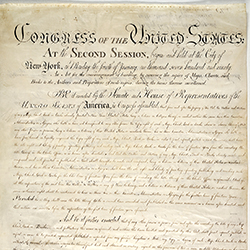
|
06-01-2003June 2003 The original copy of the modest first Copyright law, handwritten on a single piece of parchment, is preserved in the National Archives of the United States. |

|
07-01-2003July 2003 Even before the Copyright Office was a separate division of the Library, the letterhead Librarian Spofford used in transmitting cases to the Chairman of the Joint Committee contained the words "Copyright Office" |
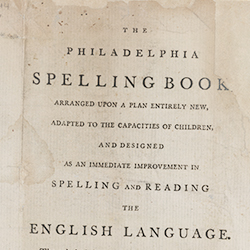
|
08-01-2003August 2003 The very first work registered under the 1790 federal copyright law was The Philadelphia Spelling Book. It was registered on June 9, 1790. |

|
10-01-2003October 2003 President Benjamin Harrison signed into law the Chace International Copyright Act in 1891 with a quill pen. President Taft used the same quill pen to sign the Pan-American Copyright Treaty in 1913. |
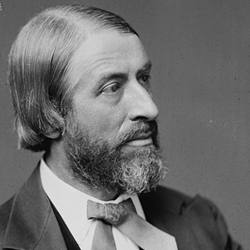
|
12-01-2003December 2003 Thanks to the tireless lobbying efforts of the sixth Librarian of congress, Ainsworth Rand Spofford, the U.S. copyright registration and deposit system was centralized in the Library of Congress in 1870. Prior to 1870, copyright registration was administered by the clerks of the U.S. District Courts. Entries for classics such as The Raven, The House of Seven Gables, and Uncle Tom's Cabin may be found in those records. |
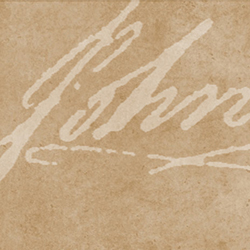
|
01-01-2004January 2004 Prior to the enactment of the first federal copyright law in 1790, twelve of the original thirteen states passed copyright laws of their own to protect authors and publishers. Delaware was the only state not to pass a copyright law for its citizens. |

|
02-01-2004February 2004 Shortly after successfully convincing Congress to centralize the copyright registration and deposit system in the Library of Congress, Librarian of Congress Ainsworth Rand Spofford began to lay the groundwork for another significant change in U.S. copyright law. He suggested to the Joint Committee on the Library that the responsibility for registration of commercial prints and labels be transferred to the U.S. Patent Office. |

|
03-01-2004March 2004 Prior to becoming a famous New York Congressman who served from 1923 until his death in 1949, Sol Bloom made a name for himself as a successful music publisher in late nineteenth and early twentieth century America. Universally recognized in theatrical circles as a "great promoter," Bloom proudly acknowledged in his autobiography that in 1899 he worked up the "best single music promotion idea he ever had." |
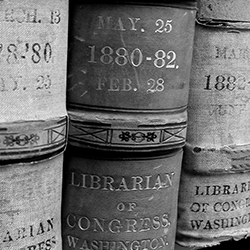
|
04-01-2004April 2004 Recording assignments and related documents in the Copyright Office began on July 25, 1870. At that time, all documents submitted for recordation were copied by hand into leather-bound ledgers and were personally signed by Librarian of Congress Ainsworth Rand Spofford. |
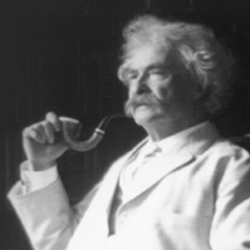
|
05-01-2004May 2004 Mark Twain—Samuel Langhorne Clemens—is considered the greatest humorist of nineteenth century American literature. It's not commonly known to modern readers that he also was a stalwart defender of authors' rights. He lobbied hard for international copyright protection and later gave colorful testimony at hearings before the U.S. Congress that lead to the third general revision of the copyright law in 1909. |
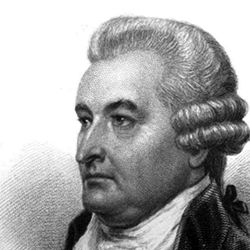
|
06-01-2004June 2004 June 2004 marked the 215th anniversary of the introduction of the first copyright bill in Congress. On June 23, 1789, Benjamin Huntington of Connecticut presented in the first session of the first Congress, HR 10, "A bill to remote the Progress of Science and Useful Arts, by securing to Authors and inventors the exclusive Right to their respective Writings and Inventions." |

|
07-01-2004July 2004 As thousands of World War II veterans helped dedicate the new World War II Memorial in 2004, the Copyright Office continued to display the Copyright Office service flag to honor its employees who answered their nation's call to duty from 1941 to 1945. |
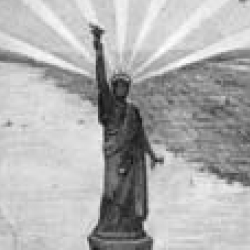
|
08-01-2004August 2004 One of the most famous sculptural works of art ever registered with the Copyright Office is the Statue of Liberty. On August 31, 1876, the Copyright Office issued copyright registration number 9939-G for the "Statue of American Independence" as the "Statue of Liberty" was first named. |
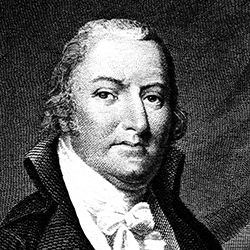
|
09-01-2004September 2004 On August 18, 1787, two delegates to the Constitutional Convention in Philadelphia, James Madison of Virginia and Charles Pinckney of South Carolina, submitted proposals advocating a federal patent and copyright system. These proposals, which were referred to as the Committee on Detail for consideration, eventually became the basis for Article I, Section 8 of the U.S. Constitution giving Congress the power to "promote the Progress of Science and useful Arts, by securing for limited Times to Authors and Inventors the exclusive Right to their respective Writings and Discoveries." |
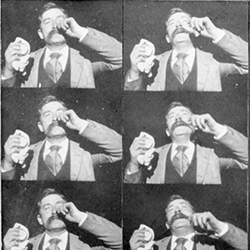
|
10-01-2004October 2004 Despite the fact that American film pioneers were creating and experimenting with motion pictures as early as the 1890s, the U.S. copyright law did not provide for the protection and registration of films, as such, until the passage of the Townsend Amendment in 1912. |
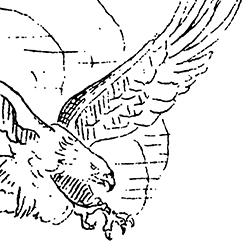
|
11-01-2004November 2004 During World War II, Copyright staffers came up with the idea of publishing a small monthly newsletter especially for Copyright Office servicemen who answered their nation's call to duty. On August 1, 1943, the Copyright Office Service Bulletin, bearing a hand-drawn patriotic eagle masthead design, made its debut. |
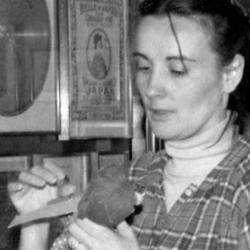
|
12-01-2004December 2004 In 1984, the idea for a permanent exhibition celebrating American creativity was conceived by ninth Register of Copyrights David L. Ladd. He was passionate in his quest to honor American authors in the new Madison building. |
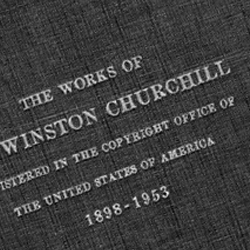
|
01-01-2005January 2005 In 1954, the Copyright Office Reference Division undertook the monumental task of compiling a complete bibliography of all the works of Sir Winston Churchill that were registered in the Copyright Office from 1898 to 1953. |
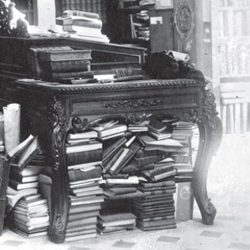
|
02-01-2005February 2005 Once copyright was centralized at the Library of Congress in 1970, the Library printed leather-bound ledgers that provided space on each page for four separate copyright entries. Each entry was hand-written and personally signed by Librarian of Congress Ainsworth Rand Spofford, who served as de facto Register of Copyrights until that position was created in 1897. |

|
03-01-2005March 2005 According to documents discovered in Copyright Office files, the first important court action under the amended law that included photographs as copyrighted works was instituted by famous Civil War photographer Mathew Brady. The action had to do with a photograph Brady took of President Andrew Johnson in Brady's studio after Lincoln's death. |

|
04-01-2005April 2005 April 29, 2005, marked the 203rd anniversary of the first amendment to the copyright law of the United States. Enacted in 1790, the initial copyright law provided protection to maps, charts, and books. The amendment added prints to the short list of protected works and required a notice of copyright ownership to be engraved on each plate from which the print was made. |
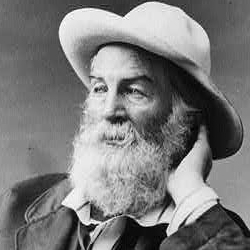
|
Walt Whitman's Leaves of Grass 05-01-2005May 2005 May 2005 marked the 150th anniversary of the copyright registration for Walt Whitman's Leaves of Grass. It was registered on May 15, 1855, in the U.S. District Court in the Southern District of New York. |
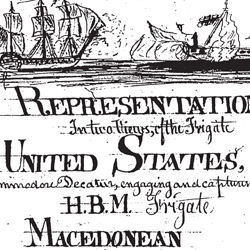
|
06-01-2005June 2005 Preserved in the Library of Congress Rare Book and Special Collections Division are the copyright record books maintained by the clerks of the U.S. District Courts prior to 1870. One unique entry from the state of New York is a claim in the name of marine artists and calligrapher George Godsell Thresher for etchings of a famous naval battle fought during the War of 1812. It includes freehand drawings that depict the copyright deposit. |
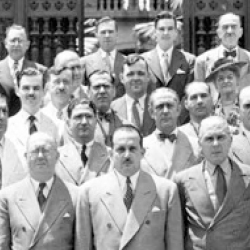
|
07-01-2005July 2005 In late spring 1946, delegates to the Inter-American Conference of Experts on Copyrights gathered at the Pan American Union Building in Washington, DC. The group concluded that derivative works of literary, scientific, and artistic creations would be protected, including photographic and cinematic adaptations. |
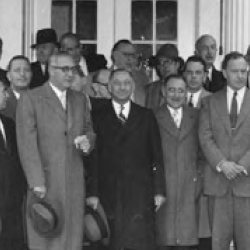
|
UCC Finally Protected American Authors Abroad 08-01-2005August 2005 When President Dwight Eisenhower signed the Universal Copyright Convention (UCC) on November 5, 1954, his pen strokes brought the United States into closer alignment with the world copyright community. |
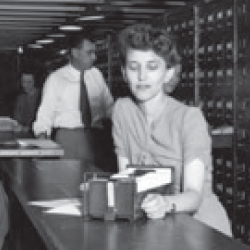
|
09-01-2005September 2005 The Copyright card Catalog housed in the Madison Building is the world's biggest card catalog. It comprises 45 million cards in 25,675 drawers. Placed top to bottom, the individual cards would stretch from San Francisco to Detroit and beyond. |
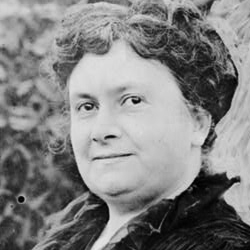
|
11-01-2005November 2005 While preparing a collection of unpublished lectures for microfilming, a staff member found a series of fifty-three unpublished lectures by the pioneering child development and education scholar Maria Montessori. Registered in 1913-1914, the lectures' copyright had expired, making them available for research. |
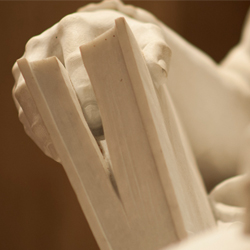
|
Statues May Be Protected by Copyright 12-01-2005December 2005 The second general revision of the U.S. copyright law in 1870 is important not only because it placed the copyright function in the Library of Congress but also, for the first time, statues, statuary, and models became eligible for copyright protection. |
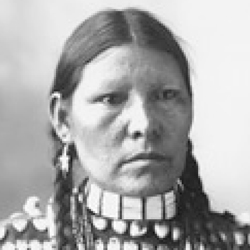
|
01-01-2006January 2006 F.A. Rinehart (1862-1928) is considered one of the finest photographers of the late nineteenth century—one who raised the then-new medium of photographic portraiture to an art form. Several of his pictures were found attached to the original copyright submission form in the Office archives. |
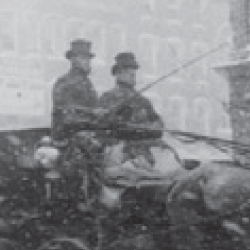
|
03-01-2006March 2006 As President Roosevelt entered the Capitol on March 4, as his term as president was about to end and President Taft was about to be inaugurated on a snowy day, the vice president rushed to Roosevelt with a fistful of bills that had been passed the night before and that needed his immediate signature. Among the bills was the copyright law. It was signed, and the group went to the Senate chamber for the inauguration. |
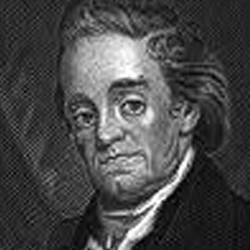
|
04-01-2006April 2006 Noah Webster (1758-1843) is perhaps best known for his 1838 dictionary, An American Dictionary of the English Language, which is still published in revised editions as Merriam-Webster Dictionaries. Webster is also, however considered the father of American copyright. |
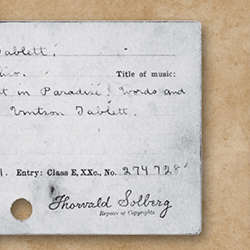
|
05-01-2006May 2006 Although the current price and method of registering a claim to copyright bear little resemblance to the system legislated by the First Congress, the process remains a bargain—for both individuals and the nation. |
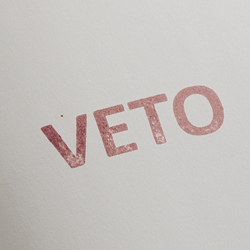
|
Congress Overrode Veto of Manufacturing Clause 06-01-2006June/July 2006 On July 8, 1982, President Reagan exercised the first veto of his presidency when he refused to sign legislation (H.R. 6198) extending manufacturing clause. Included in the 1976 Copyright Act, the manufacturing clause was a protectionist measure that was designed originally to help the American printing industry. But citing the strength of the industry, "one of the most modern and efficient in the world," and the Administration's desire to strengthen free trade and to "remove artificial foreign barriers to American exports," Reagan vetoed the extension. |
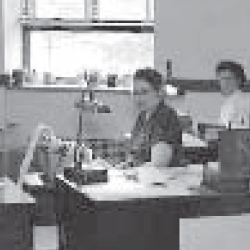
|
08-01-2006August 2006 On the occasion of the Copyright Office's 2006 move to Crystal City, Virginia, Copyright Notices has assembled a photo history of the Office in its past locations. |
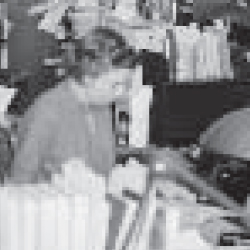
|
Cataloging Division Is 60 Years Old 09-01-2006September 2006 Librarian of Congress Luther Evans issued General Order 1264 on August 17, 1945, creating in the Copyright Office a Cataloging Division "for the cataloging of all categories of material deposited for copyright after December 31, 1946, . . . in the interest of the total program of the Library of Congress, and particularly in the interest of the persons served by the Copyright Office." |

|
Hearings Pay Off with General Revision 10-01-2006October 2006 October 19, 1976, marked the thirtieth anniversary of when President Ford signed into law the fourth general revision of the copyright law of the United States. His signature on Public Law 94-553 signified the end of years of reports, consultations, and hearings in which the Copyright Office was a key participant. |

|
First Revision Gave Copyright to Musical Compositions 11-01-2006November 2006 Congressman William Wolcott Ellsworth, son-in-law of copyright advocate Noah Webster, led the fight for copyright law revision in 1831. He felt strongly that American copyright law should be brought into conformity with European copyright law, which protected musical compositions and had longer terms of copyright protection. |
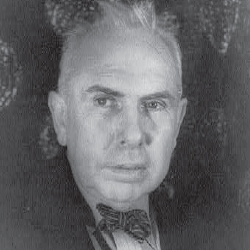
|
Theodore Dreiser Valued a Copyright Registration 12-01-2006December 2006 Theodore Dreiser, the renowned American author of naturalistic novels, knew the value of a copyright registration when he saw it, and the value to him was not just monetary. It had to do with control over his artistic creation. |
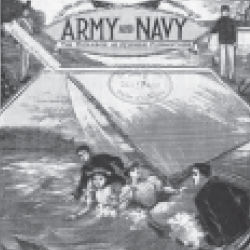
|
Dime Novels Were Copyright Deposits 01-01-2007January 2007 The Library of Congress collections include 40,000 dime novels that represent part of the cultural history of America's reading public and publishing industry. These items came to the Library because they were submitted as deposits accompanying applications for copyright registration. |
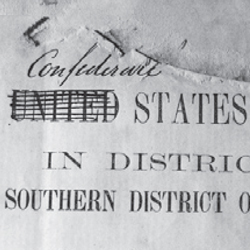
|
The Confederates Had Copyright? Who Knew? 02-01-2007February 2007 The Confederate States of America (CSA), the eleven states that attempted to secede from the United States of America in 1861, had a copyright law that, to some extent, functioned from 1861 to 1865. The statute mirrored U.S. law of the time, and registration took place in the district court where the author or proprietor lived. |
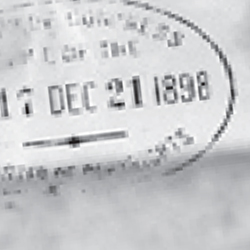
|
Old Copyright Deposits Enrich Understanding 03-01-2007March 2007 When The Portland sank in a storm in 1898, sadly, everyone on board was lost. Photographer Thomas E. Marr photographed some of the wreckage that washed ashore, registering his photos for copyright on December 19, 1898. The photos help us enrich our understanding of historical events. |
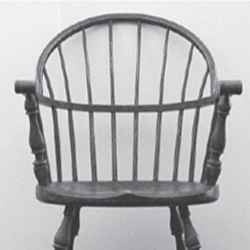
|
Windsor Chairs Graced Copyright Office 04-01-2007April 2007 In the past, some Copyright Office staffers sat on oak Windsor chairs. Windsor chairs are of 18th century rural English origin, and some of the chairs that were used by the Office would now be valuable antiques. |
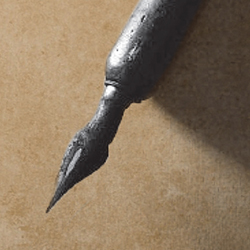
|
Dip Pens Recorded Many a Copyright 05-01-2007May 2007 While preparing to microfilm original Class D drama deposits in manuscript format, a staff member found an old pen inserted between the pages. The pen is a dip pen, and it is important because it is the only remaining example of a dip pen used to record registrations more than nine decades ago. The style of dip pen is notable because it was the inspiration for the Copyright Office seal adopted for use on and after January 1, 1978. |
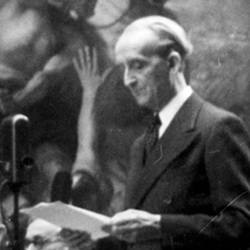
|
Photo Conveys Dignity Amid Deliberations 06-01-2007June 2007 The Brussels Conference for the Revision of the Berne Convention convened in 1948. Copyright Office files hold a photo of the Brussels gathering. |
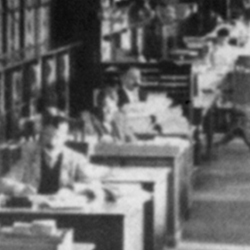
|
Copyright Office Work Continues; Workforce Changes 07-01-2007July 2007 A 1902 record of the Copyright Office that employees discovered in the archives disclosed changes in the Copyright Office workforce form 1902 to 2007. At the time, the Office was ahead of the nation in employing women, who accounted for 39 percent of the 1902 Office workforce. According to the U.S. Census Bureau, women constituted about 19 percent of the American workforce in 1900. |

|
Security and Rules a Concern for the "Force" 08-01-2007August 2007 While researching items of interest for designers working on a graphics project, a staff member discovered a venerable memo from the Register of Copyrights in 1901 reminding staff members, then called "the force," of rules regarding visitors to their work spaces. Friends calling on members of the force were to be received outside the railing at the west end of the room where seats were provided for this purpose. |

|
Watch Fob Not Mentioned for 99 Years 09-01-2007September 2007 In 2007, a watch fob gifted to Register of Copyrights Thorvald Solberg, was found in the Office archives. It was found in an envelope with a note "Lv [leave] attached to letter + make no mention of," given that the Register could not accept a gift from someone requesting services from the Office. |
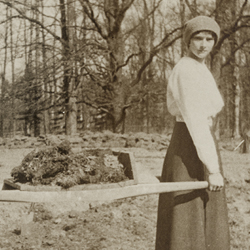
|
10-01-2007October 2007 Among the finds in the Office archives are two images of the family of Russian czar Nicholas II shortly before the family's execution in 1918 during the Russian Revolution. Underwood & Underwood, a firm that sold images of current events, copyrighted eleven photos in 1921 of the "Last Days of the Romanoffs." |
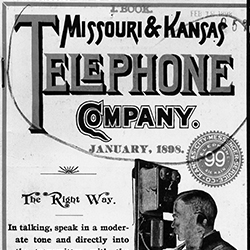
|
Certificate from 1897 Has Antique Charm 11-01-2007November 2007 In 1870 with the second general revision of the copyright law, copyright registration and deposit were centralized in the Library of Congress. At the same time, the Copyright Office began to issue certificates of registration. While the format of these certificates has evolved over the years from paper to digital, nothing beats the charm of an old original paper document. |
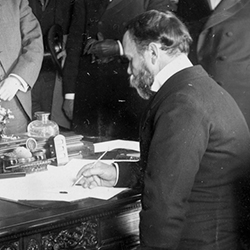
|
Historical Copyright Deposits to Join Library's Collections 12-01-2007December 2007 "The Spanish War Is Over" the New York Times declared on April 12, 1899, the day after representatives of Spain and the United States gathered at the White House to ratify the peace treaty formally ending the Spanish American War. A photograph of the ratification was found in the Office archives amid uncataloged elements of the Copyright Office's historical deposits. Shot by Wilbert Melville and registered in 1899, the photo is one of two newly discovered images documenting the war's conclusion. |
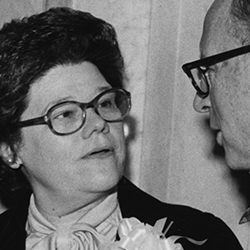
|
Barbara Ringer Hosted Gala Celebration of 1976 Copyright Act 01-01-2008January 2008 With the enactment of the 1976 Copyright Act on October 19, 1976, the Copyright Office was inclined to celebrate. A committee of employees planned a party, but the funding source withdrew. Then-Register of Copyrights Barbara Ringer, one of the principal architects of the 1976 Copyright Act, assumed the expense. |

|
"Copyright Office Theme Song" Dedicated to Barbara Ringer 02-01-2008February 2008 Register of Copyrights Barbara Ringer threw a gala party on February 26, 1977, for Copyright Office employees to celebrate the enactment of the 1976 Copyright Act. That night, the Copyright Office Chorale performed for the first and perhaps only time an original composition dedicated to the Register. |
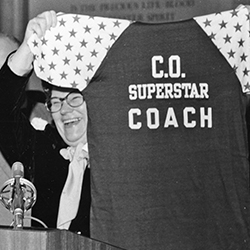
|
"Superstar Coach" Honored with T-Shirt During Celebration of 1976 Copyright Act 03-01-2008March 2008 In the Great Hall of the Library of Congress during a festive February 26, 1977, evening celebration of the enactment of the 1976 Copyright Act, Register of Copyrights Barbara Ringer received a T-shirt proclaiming her to be "C.O. Superstar Coach." |

|
A New Task for the Copyright Office: Licensing Jukeboxes 04-01-2008April 2008 The 1976 Copyright Act, which took effect on January 1, 1978, brought many substantive changes to the Office. Among them was the introduction of an entirely new function: licensing. One of the initial licenses was meant to facilitate the public performance of music on coin-operated jukeboxes. The jukebox compulsory license was replaced in 1990 with a license negotiated between representatives of music creators and jukebox operators, and the Jukebox License Office, located in Nashville, Tennessee, took over administration of the license. |
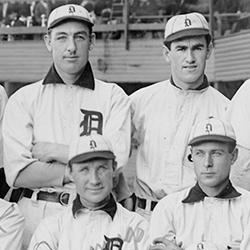
|
A Small Window on Baseball History Found in Copyright Deposits 05-01-2008May 2008 Many historical copyright deposits remained uncataloged in the Office's files for more than a century. One, a photograph titled Detroit Tigers 1907, was found last summer amid uncataloged elements of the Copyright Office's historical deposits. Noted members of the team include Hall of Famers Hughie Jennings, Ty Cobb, and Sam Crawford. |
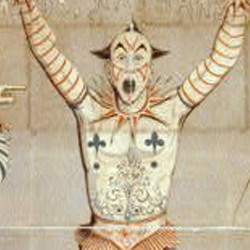
|
Hidden from Sight, a Giant Circus Poster Is Saved 06-01-2008June 2008 Five Celebrated Clowns Attached to Sands, Nathans & Company's Circus was submitted as a copyright deposit in 1856. At the time, there was little interest in the billboard-size poster—so little, in fact, that it remained sealed in the package in which it came for an entire century. |
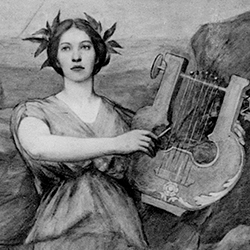
|
Employees Singing in the Halls? Not Here! 07-01-2008July 2008 Two memos discovered in the Copyright Office enlighten us as to a 1901 staff issue. A group of "lady clerks" was accused by a guard of singing in the South Corridor on January 21, 1901.The ladies, not content to let the accusation stand, wrote a letter of defense to Register of Copyrights Thorvald Solberg. |
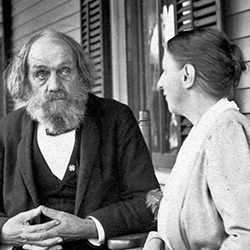
|
Summer Vignette Depicts Two Prominent Americans from Another Era 08-01-2008August 2008 Hidden from view for 109 years, a photograph of two Americans well known in their time but largely forgotten today evokes another era. The photograph, discovered in the Office archives, was registered for copyright in 1899 by Anna Josephine Ingersoll and shows Edward Everett Hale (1822-1909) and Sarah Farmer (1844-1916) in conversation while seated on the porch of the Hotel Piazza at Greenacre in Eliot, Maine. |
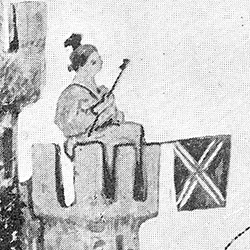
|
Departure of "Willie Wallie" Astor Infuriates America 09-01-2008September 2008 William Waldorf Astor left the United States for England in 1890 with bitter words, which elicited an angry response from the press. In 1899, he became a British subject, causing further outrage in the United States, including an illustration registered in the Copyright Office on September 25, 1899. |
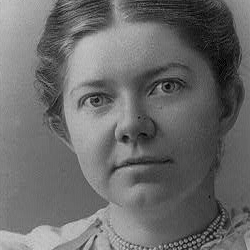
|
Early Works of Amy Beach Discovered Among Copyright Deposits 10-01-2008October 2008 Among the deposits found in the 1899 copyright archives were songs by one of the most important and successful American female composers, Amy Beach. |
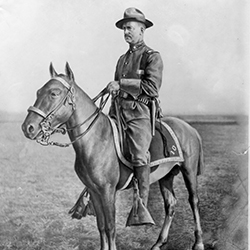
|
Copyright Deposits Show Cultural Heritage in More Ways Than One 11-01-2008November 2008 The archives maintained by the Copyright Office preserve much of America's cultural heritage. Included in these records are the 1899 copyright registration deposit of a straight pin, which was an important and necessary object among office supplies in the closing days of the nineteenth century. |
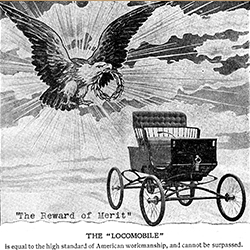
|
Historical Ads Vaunt Short-Lived Steam Car 12-01-2008December 2008 On January 25, 1900, the Washington, DC, post office tested a new way to deliver mail: it used a vehicle called the Locomobile. While searching the Office archives, interns discovered several advertisements for the Locomobile. |
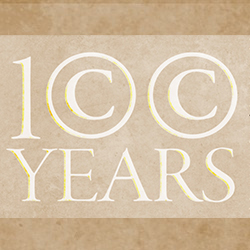
|
Reaching 100 Years Old, the "c" Becomes an Antique 01-01-2009January 2009 The year 2009 marked the 100th anniversary of the use in the United States of the copyright symbol. The widely recognized element of the copyright notice had become a centenarian and thus an antique. |
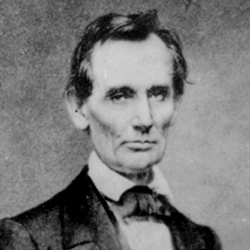
|
Lincoln Authorized 1865 Copyright Legislation 02-01-2009February 2009 The Library of Congress opened With Malice Toward None: The Abraham Lincoln Bicentennial Exhibition on February 12, 2009, to coincide with the 200th anniversary of Lincoln's birthday. The exhibition documented the growth of the sixteenth president of the United States from prairie lawyer to statesman, exploring the historic challenges he faced, including slavery, the dissolution of the Union, and the Civil War. Copyright is not among the topics typically associated with Lincoln, yet he signed important copyright legislation just six weeks before his assassination. |
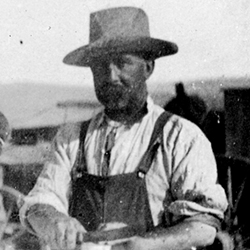
|
Images of Fossil Fields Expedition Preserved in Copyright Deposits 03-01-2009March 2009 On July 19, 1899, an extraordinary collection of eighty-six geologists, paleontologists, and museum experts departed Laramie, Wyoming, for thirty-nine days of field exploration. By way of copyright deposit, the expedition reaches into our time to enrich our knowledge today as we view the events recorded by the deposit photographs preserved by the Copyright Office. |
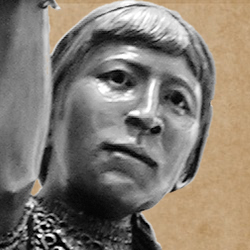
|
Bridge-Building Native American Registers Early Copyright 04-01-2009April 2009 Emancipation Hall, the majestic gathering space in the Capitol Visitor Center, showcases twenty-four statues from the National Statuary Hall Collection. Among them is a bronze likeness of Sarah Winnemucca, thought to be the first Native American woman to secure a copyright and publish in the English language. |
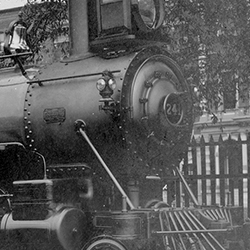
|
Summer Interns Add to Library Collections 05-01-2009May 2009 When summer interns sorted through registration records from 1899, they found photographs of President McKinley with Admiral Dewey following the Spanish American War, images if immigrant Chinese children by a pioneering woman photographer, and a photo of Engine Number 241 of the Rutland Railroad, registered by Vermont photographer Louis Frederick Brehmer. |
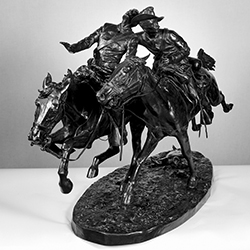
|
Copyright Applications May Help Museum Curators 06-01-2009June 2009 Applications for copyright registration may seem cut-and-dry to those who see plenty of them. But to the eyes of a museum curator, the copyright application may yield very interesting information. |
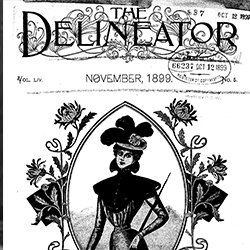
|
Fashions Tell Us about the Times 07-01-2009July 2009 Fashion copyright deposits help tell a story of fashion through time. |

|
Jazz Legend Born 100 Years Ago This Month 08-01-2009August 2009 Lester Young was born in Woodville, Mississippi, on August 29, 1909. Widely cited as one of the great jazz musicians of the twentieth century, Young was known by friends and fans as "Pres," short for "president of the tenor saxophone." Nearly 200 copyright records exist under his name, the most recent being a compilation, The Definitive Lester Young, published in 2000. |

|
Historical Deposits Found in Warehouse 09-01-2009September 2009 Commercial art found in the Office's archives were made available to the public through the Prints and Photographs Division, which describes its collection of product labels as "fertile territory for scholarly exploration." |
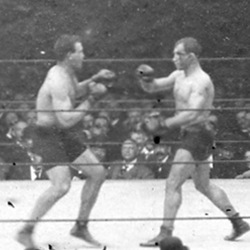
|
Photos Are Evidence of a Tale of Pugilism, Piracy, and Copyright 10-01-2009October 2009 Pictures found in the Office's archives came from an early movie deposited with a claim to copyright by American Mustoscope and Biograph Company. The deposit is entitled Jeffries-Sharkey Contest. Until 1912, motion pictures were not subject to copyright, so to get around the omission of a new technology in the law, some film companies submitted prints representing all frames of a film and claimed copyright in the photographs. |
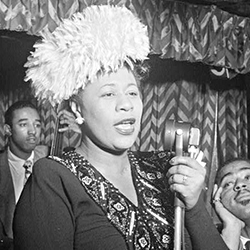
|
Chance Debut at Apollo Theater Leads to Storied Career 11-01-2009November 2009 Ella Fitzgerald first appeared at the Apollo theater when she won the chance to perform on amateur night when she was seventeen. Eventually dubbed "The First Lady of Song," Fitzgerald recorded thousands of songs over her career and performed all over the world. After she died in 1996, the Ella Fitzgerald Collection was donated to the Library of Congress. It contains photographs, videotapes, more than 10,000 pages of scores, and individual musician parts for more than 1,000 ensemble and symphony orchestra arrangements. |
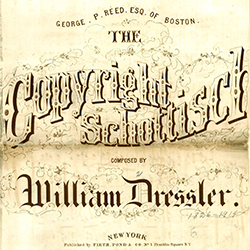
|
Dancing and Singing about Copyright 12-01-2009December 2009 After listening to George Harrison's "This Song," which mentions that it doesn't infringe on anyone's copyright, an Office staff member researched any other musical compositions with similar references. He found several compositions, including one with no lyrics, "The Copyright Schottische" by William Dressler registered in 1855. |
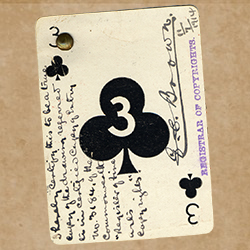
|
Copyright Office West? Who Knew We Had a Branch Office in California 01-01-2010January 2010 On September 18, 1913, Congress passed, and President Wilson signed, the Kahn Act. This act provided for the free importation of articles intended for exhibition and for the protection of foreign exhibitors' intellectual property. The part pertaining to copyright authorized the librarian of Congress and the Commissioner of Patents to establish a "branch office" to issue U.S. certificates of copyright registration and trademark and patent ownership without charge to foreign nationals who presented satisfactory prof of proprietorship in a copyright from their own countries and demonstrated that the item was actually on exhibit. |
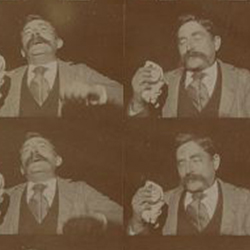
|
Copyright Subject of Capitol Visitor Center Exhibition 02-01-2010February 2010 In 2010, artifacts from Edison Kinetoscopic Record of a Sneeze, the earliest surviving motion picture deposited with the Copyright Office, joined A More Perfect Union, a U.S. Capitol Visitor center exhibition. The exhibition documented the topics Congress addresses and the way legislation affects our lives. |
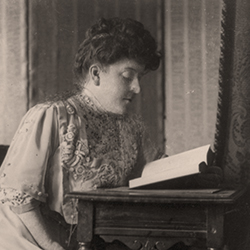
|
Piracy Inspires "Real" Stage Version of Children's Classic 03-01-2010March 2010 Until the enactment of the International Copyright Act of 1891 (commonly called the Chace Act), copyright protection abroad for American authors as well as protection for foreign authors in the United States approached the status of the proverbial "wild west," a realm ruled by lawless piracy. U.S. authors were commonly pirated abroad, as were foreign authors in the United States. But one instance of British piracy yielded a victory for authors. |
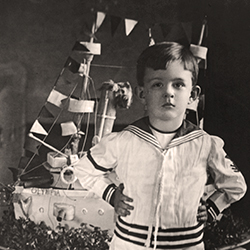
|
04-01-2010April 2010 "Happy Birthday to You" is one of the most frequently sung songs in the English language, according to the Guinness Book of World Records. In 2010, the copyright to the song was on the Illinois Library Association's listing of notable anniversaries. An arrangement of it was copyrighted in 1935, making 2010 the seventy-fifth anniversary of the copyright. |
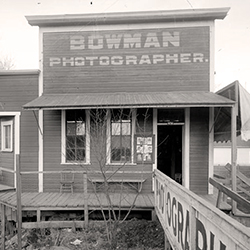
|
Walter Bowman's Photos, Part of Our Cultural Heritage, Preserved in Copyright Office 05-01-2010May 2010 The system of copyright deposit preserves cultural treasures. When deposits that have remained unseen for decades are brought to light, they not only call our attention to these items that may broaden our understanding of America's cultural heritage, but they also highlight the creator. Such is the photo entitled Umatilla Babies, which was uncovered in 2009 in the Office archives. |
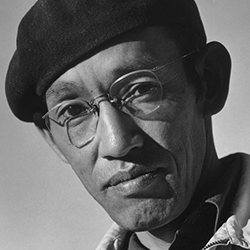
|
Updated Online Catalog Highlights Wartime Internment Photos 06-01-2010June 2010 Users of the Prints and Photographs Online Catalog can scroll through an attractive and simple-to-read listing, click on desired collection title, and view images from the online catalog. The collection includes Ansel Adams's World War II photographs of Japanese Americans interned in Manzanar, California. Adams donated the photographs to the Library placing no copyright restrictions on their use. |
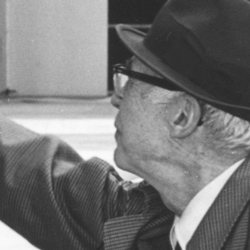
|
Hancock's Statue Is a Work Made for Hire 07-01-2010July 2010 Walter Kirtland Hancock, one of the foremost sculptors of his era, signed a contract on July 17, 1972, to create and deliver to the front door of the Madison Building a monumental sculpture of James Madison, fourth president of the Untied States, for whom the building is named. The contract was signed when the 1909 Copyright Act was in effect, and the sculpture is a work made for hire. The legal author is the United States. |
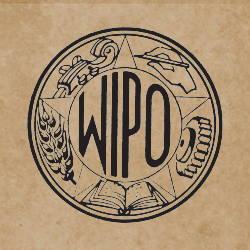
|
Intellectual Property Agency Celebrates 40th Anniversary 08-01-2010August 2010 In 2010, the World Intellectual Property Organization (WIPO) celebrated its fortieth anniversary. Through WIPO, member states negotiate with one another about protection and use of intellectual property around the world. Its roots go back to 1873, when foreign exhibitors refused to attend the International Exhibition of Inventions in Vienna, fearing their ideas would be stolen and commercially exploited in other countries. |
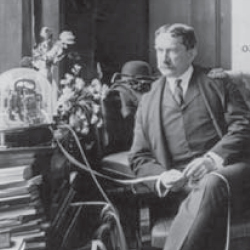
|
Did Ticker Tape Rain on Copyright Office? 09-01-2010September 2010 When Copyright Office staffers organized deposits stored at an off-site storage facility, they came upon boxes of ticker tape. The six-inch wide rolls of paper were registered by Down Jones Co. in 1977 and are imprinted with the Dow Jones News Service financial and business news sent to subscribers. |
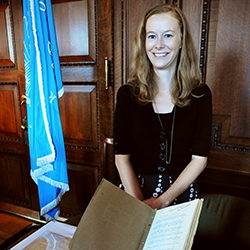
|
Drama Deposits Include Hidden Gems 10-01-2010October 2010 Housed in the Library's Manuscript Division, the Copyright Drama Deposit Collection contains an estimated 270,000 scripts ranging from early vaudeville drama, unproduced plays, and major theatrical texts to radio and television scripts dating from the beginning of broadcasting. |
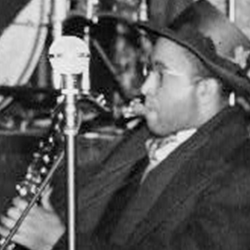
|
Jazz-Era Photos Enter Public Domain 11-01-2010November 2010 In 2010, the William P. Gottlieb Collection of jazz photos, housed at the Library of Congress, entered the public domain. The Library acquired the collection in 1995 with support from the Ira and Leonore S. Gershwin Fund. Under the purchase agreement, Gottlieb retained copyright to the collection initially but transferred it to the public domain effected February 16, 2010. |
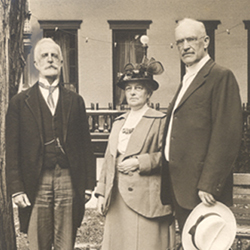
|
R. R. Bowker Documents Show Demand for Copyright 12-01-2010December 2010 In the late 19th century, England and the United States pirated the work of each other's authors with impunity. Richard Rogers Bowker (1848-1933), a founder of the American Library Association and editor of Library Journal and Publisher's Weekly, wanted to put a stop to it. In 1879, Bowker, who campaigned for copyright protection and who knew just about everybody, sent a survey to prominent American authors and publishers seeking their views on international copyright. |
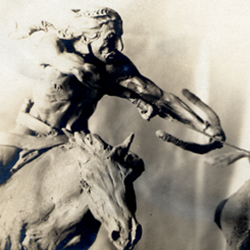
|
Mythic American West Apparent in Copyright Deposit 01-01-2011January 2011 After July 8, 1870, when statuary was added to the list of works eligible for copyright registration, artists' three-dimensional depictions of Buffalo Bill Cody flowed into the Copyright Office. Charles Marion Russell's statute "Buffalo Hunt" was registered in 1905 and perpetuated the vision of the American West as a place of great hunters, Native Americans, and powerful animals. |

|
Private Copyright Law Ruled Unconstitutional 02-01-2011February 2011 In 1971, Congress passed a copyright law that applied to only one work: Science and Health with Key to the Scriptures by Mary Baker Eddy, founder of the Christian Science Church. In October 1971 testimony before the House subcommittee with jurisdiction over copyright, witnesses described why they thought Science and Health needed special protection. Others thought it violated the separation between church and state. |
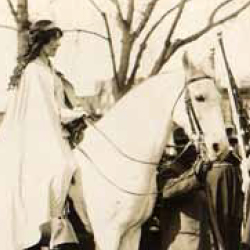
|
Women's Suffrage and Copyright; Any Connection? 03-01-2011March 2011 Part of women's history in the United States may be told through the suffrage movement that culminated in the nineteenth amendment to the Constitution, giving the vote to women. Photos from George Grantham Bain's collection deposited for copyright registration tell the story of the Women's Suffrage Procession in Washington, DC, on March 3, 1913. As it turns out, a Copyright Office staffer was one of the parade's organizers. |

|
Copyright Records Document "Lost" Silent-Era Films 04-01-2011April 2011 In October 2010, the Library of Congress accepted from the Boris Yeltsin Presidential Library of Russia digital copies of ten silent films previously thought to have been lost. Each of the films had been registered for copyright, and those copyright records are the only way archivists knew they existed. |
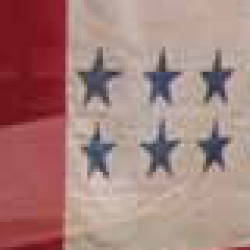
|
Veteran Staffer Visits Copyright Office 05-01-2011May 2011 A Copyright Office staff member who served in World War II talks about life in the Office back then and about the Copyright Service Flag. |
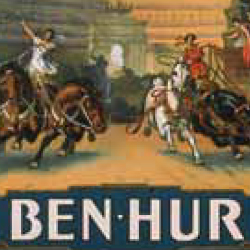
|
Ben Hur Rides Through Copyright History 06-01-2011June 2011 Movie buffs enjoy the 1959 film Ben Hur starring Charlton Heston and featuring an exciting chariot race between characters Ben Hur and Messala. Civil War general Lew Wallace (1827-1905) published a novel about fictional first-century hero Judah Ben Hur. Wallace declined every plea to license his work until 1899 when he haggled at length over royalties. But an unauthorized silent film also was made, and Wallace's son, Henry, and publisher Harper brothers sued for copyright infringement. |

|
19th-Century Infringement Ruling Shapes Copyright Law 07-01-2011July 2011 More than 130 years ago, the U.S. Supreme Court ruled in Selden v. Baker that even though copyright law protects the expression of an idea, it does not protect the idea itself. The 1879 ruling—sidely called "seminal"—has influenced many court decisions and copyright doctrines in the years since. |
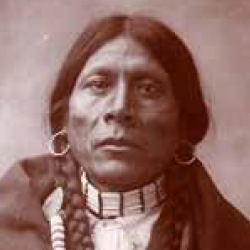
|
Archives Enriched by Copyright Deposit 08-01-2011August 2011 Head of the U.S. Bureau of Ethnology until 1902, Major John Wesley Powell established a photo collection, which today is part of the National Anthropological Archives. Copyright deposits helped to build that collection. |
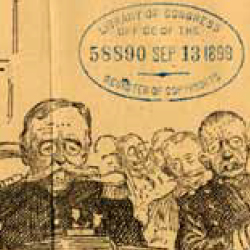
|
Copyrighted Cartoons Recall Notorious French Trial 09-01-2011September 2011 When Homer Davenport died in 1912, he was one of America's foremost political cartoonists. A Junior Fellows Program intern unearthed Davenport cartoons relating to the 1899 court martial in Rennes, France, of Alfred Dreyfus, a French Jewish army captain charged with selling military secrets to the Germans. Davenport covered the Dreyfus trial for the New York Journal and Advertiser. |
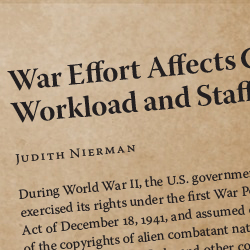
|
War Effort Affects Copyright Office Workload and Staffing 10-01-2011October 2011 During World War II, the U.S. government exercised its rights under the first War Powers Act of December 18, 1941, and assumed control of copyrights of alien combatant nationals. Citizens of Germany, Italy, and other countries at war against the United States lost their intellectual property rights in the United States. Created by Executive Order 9095, the Office of the Alien Property Custodian (APC) became the de facto owner of these copyrights. |
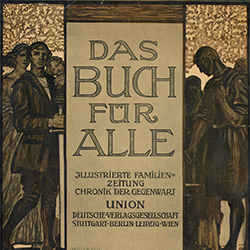
|
Copyright Claims Document German-American Ties 11-01-2011November 2011 A group of copyright applications had been traveling with the Records Management Section for as long as anyone could remember. A summer intern researched the content and found the applications were German copyright claims from as long as a hundred years ago. |

|
Devotion Runs Deep in Copyright Office 12-01-2011December 2011 Staff members tend to stay with the Copyright Office for many years. One example was Herbert Howell (1869-1963), a lawyer who came to the Office in 1909 from New York. |
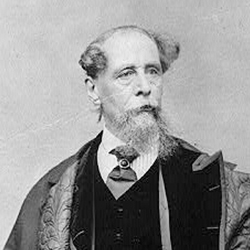
|
International Copyright Champion Born 200 Years Ago 01-01-2012January 2012 Charles Dickens was born on February 7, 1912, in Portsmouth, England. More than 200 years later, he is still one of the most widely read Victorian novelists. Dickens was hugely popular during his lifetime too, not only in England, but also in the United States. To his dismay, however, he received no royalties from the U.S. sales of his work, because U.S. copyright law at the time protected only American authors. |
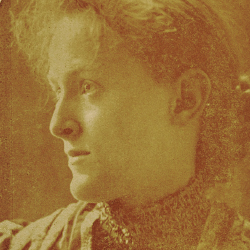
|
Assistant Register Brown Causes Public Uproar 02-01-2012February 2012 Assistant Register of Copyrights William Brown caused a public uproar in 1926 when he denied registration because the applicant was trying to register her claim to copyright using her maiden name. |

|
1912 Amendment Adds Movies to Copyright Law 03-01-2012March 2012 A hundred before the summer of 2012, a new category of work became subject to copyright protection: motion pictures. The Townsend Amendment to copyright law took effect August 24, 1912, creating Class L for dramatic motion pictures and Class M for newsreels and similar material. |
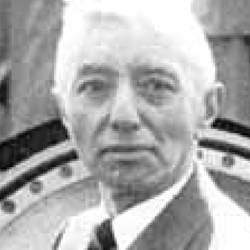
|
Copyright Office Sued for Registering Claim 04-01-2012April 2012 Starting in the 1950s, the Copyright Office was involved in a lengthy court case involving the definition of a work of the U.S. government. Public Affairs Associates Inc. v. Ricover dragged through the courts for nine years and resulted in the Copyright Office being sued for registering a claim. |
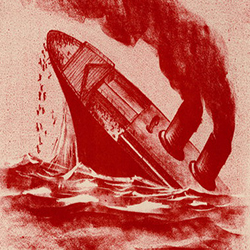
|
Copyright Records Bear Witness to Fascination with Titanic 05-01-2012May 2012 About 2:20 a.m. on April 15, 1912, the RMS Titanic sank into icy waters in the North Atlantic. Almost immediately, the Titanic disaster became the subject of public fascination, giving rise to countless newspaper headlines, poems, songs, movies, books, plays, and works of art. Copyright records—as a gauge of the public imagination—reflect this enduring interest. |
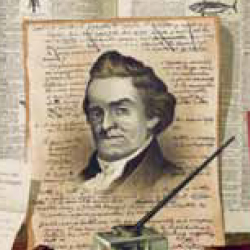
|
Early American Made Living from Copyright 06-01-2012June/July 2012 Today, Noah Webster is most famous for the dictionaries he compiled. But two centuries ago, he was a well-known political thinker, educator, and author. One of his early writings, a spelling book, became America's first bestseller and earned him the title "father of copyright." |

|
Photographer Donates Copyrights 08-01-2012August 2012 The American people are the beneficiary of a generous author's gift of her copyrights in thousands of photos. Noted photographer Carol Highsmith has donated all her photos in her "This Is America" project to the Library of Congress without copyright restrictions. |
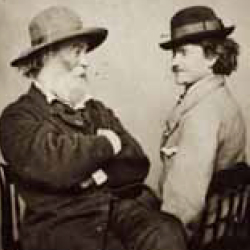
|
Rare Copyrighted Books to Be Part of Library Exhibition 09-01-2012September/October 2012 "The Civil War in America" showcased more than 200 unique items from the Library of Congress' Civil War collections, many never before on public view. Among the diaries, letters, song sheets, newspapers, and other articles on display, dozens of copyrighted works helped tell the story of people from the North and South whose lives were lost or affected by the war. |

|
Longest Continuously Running Movie May Not Have Been Registered 11-01-2012November/December 2012 In 1911, brothers Ellsworth and Emery Kolb created The Grand Canyon Film Show, the first motion picture of the Grand Canyon and a film that holds the record as the longest continuously running movie ever. But did they copyright their movie? |
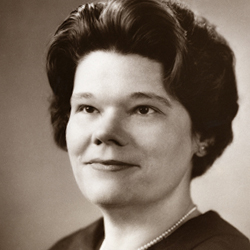
|
Barbara Ringer Wrote a Witty Ditty 01-01-2013January/February 2013 Barbara Ringer, famed Register of Copyrights from 1973 to 1980, is known as the principal architect of the 1976 Copyright Act. She also was a poet, as was found in the Office's historical files. |

|
"Copyright Department" Headed by Register Opens Doors in 1897 03-01-2013March/April 2013 The first Register of Copyrights, Thorvald Solberg, took office on July 22, 1897. Five months earlier, President Grover Cleveland had signed a government appropriations bill creating a separate "copyright department" within the Library of Congress and establishing the position of Register. |
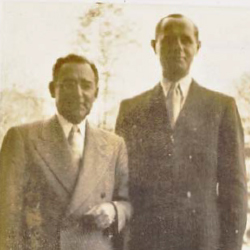
|
Old Photos of Dignitaries Arouse Curiosity 05-01-2013May/June 2013 Two photos dated 1950 turned up in old Copyright Notices files. A notation said, "Washington meeting UNESCO," and included surnames of the men portrayed. Office staff members decided to find out what was going on back then. |

|
Register of Copyrights Identifies "Blockbuster" Issues--30 Years Ago 07-01-2013July/August 2013 On January 5, 1983, Register of Copyrights David Ladd addressed Copyright Office staff gathered for an orientation session. Read text of his speech about the rapidly changing ways of intellectual property dissemination and protection. |

|
Hopalong Cassidy Continues to Generate Income 09-01-2013September 2013 Hopalong Cassidy actor William Boyd's (1898-1972) story could be titled "Worn-out Actor Risks Everything and Buys Copyrights." These copyrights made him a very rich man, but how? |
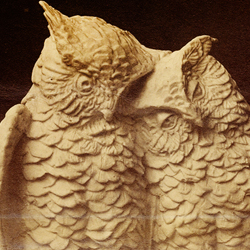
|
Thousands of Early Copyright Records Newly Searchable 10-01-2013October 2013 Researchers can now access details about thousands of copyright registrations from the 1870s. The Copyright Deposit Collection contains nearly 920,000 registrations and deposits, and the database is accessible in the Rare Book and Special Collections Division of the Library of Congress. |
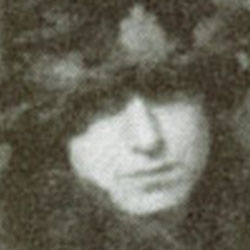
|
NAACP Reaps Royalties from Dorothy Parker's Works 11-01-2013November 2013 Dorothy Parker (1893-1967) was a founding member of the Algonquin Round Table in the 1920s, a group of writers who met in the Algonquin Hotel in New York City, mainly to exercise their wit. She had a longstanding interested in, and participation with, liberal and civil rights causes. Upon her death, her will gave her estate, including copyrights and royalties, to the Reverend Dr. Martin Luther King. Upon his death, the literary estate passed to the National Association for the Advancement of Colored People (NAACP). |

|
Assassin's Assassin Was Copyright Registrant--and Infringer 12-01-2013December 2013 Jack Ruby, who shot and killed President Kennedy assassin Lee Harvey Oswald, held a copyright registration under his birth name Jack Rubenstein for a color print titled "Remember Pearl Harbor." Also, during an FBI interrogation, Ruby stated that he served jail time for unauthorized sale of copyrighted sheet music "back in the old depression days" in Chicago. |
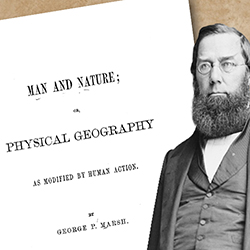
|
Copyright on First Scholarly Study of Man's Impact on Nature Donated, Reclaimed 01-01-2014January 2014 George Perkins Marsh, now considered one of the first modern environmentalists, is another prominent and remarkable person who gave away his copyright. His book, Man and Nature (1864), focused on forest preservation and soil water conservation. |
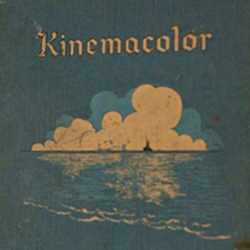
|
100 Years Ago, Single Registration Marked Early Foray into Color Cinema 02-01-2014February 2014 On September 23, 1913, the Kinemacolor Company of America registered a film adaptation of The Rivals, a comedy of manners by Richard Brinsley Sheridan first performed in London in 1775. The film is probably the first color feature registered with the Copyright Office. Motion pictures had been eligible for copyright protection for just a year in 1913, and color feature films were rare. |

|
What about Those Attractive Postage Stamps? Are They Copyrighted? 03-01-2014March 2014 Because postage stamps printed under the U.S. Post Office were works of the U.S. government, stamps dating from before 1971 were not subject to copyright and are today in the public domain. However, USPS stamps are copyrighted. The Office's online records contain hundreds of visual arts claims for postage stamps with the USPS as claimant as an employer for hire. |

|
Copyright Deposit Sets Record Straight on Noted 20th-Century Song 04-01-2014April 2014 The Library's "Songs of America" online exhibition highlighted how copyright records can help to shed light on American culture and history. To explore the American experience through song, the exhibit draws on hundreds of thousands of pieces of sheet music and sound recordings registered for copyright since 1820. William Grant Still—cited as the "dean of the African American composers" in The Performing Arts Encyclopedia—registered his composition "Grief" on June 15, 1953, depositing an original unpublished manuscript with the Copyright Office. He wrote the music for a poem by LeRoy V. Brant. |

|
Now in Public Domain, Lewis Hine Photos Changed America 05-01-2014May 2014 An American photographer, educator, and photo journalist, Lewis Wickes Hine, played an important part in the passage of laws regulating child labor in the United States. In 1906, then a professional photographer as well as a sociologist and educator, he went to work for the Russell Sage Foundation, which funded social research. His task was to document people and life in Pittsburgh's steel-making industry. Two years later, he left his teaching position and took his photography skills to the National Child Labor Committee (NCLC), which advocated for social reforms in the area of child labor. |
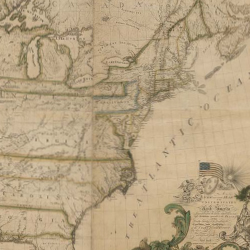
|
Rare Map on Display at Library Scored Some "Firsts" 06-01-2014June/July 2014 Engraver Abel Buell "came out of nowhere," at least in terms of cartography, when he printed a United States map in 1784. He was the first U.S. citizen to print a map of the United States after the Treaty of Paris was signed on September 3, 1783. |
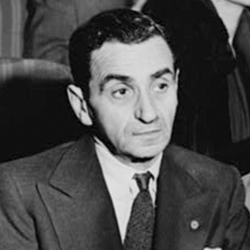
|
Irving Berlin Gives "God Bless America" Royalties to Scouting 08-01-2014August 2014 Irving Berlin (1888-1989), the famed American songwriter and composer, held numerous copyrights in his 900 songs, 19 musicals, and 18 movie scores. The Rogers & Hammerstein Organization states that Berlin decided to give away all royalties from, and control of, perhaps his most famous song. |
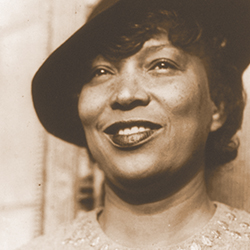
|
Writer's Reputation Grows with Rediscovery of Copyright Deposits 09-01-2014September 2014 Zora Neale Hurston died in obscurity in a Florida nursing home in 1960. But her standing as a distinguished writer of African American literature was already on the rise in 1997, when retired visual arts examiner John Wayne identified ten little-known play scripts she had deposited decades earlier for copyright registration. The discovery of the scripts, added to other known Hurston plays, established her as an important twentieth-century dramatist. |
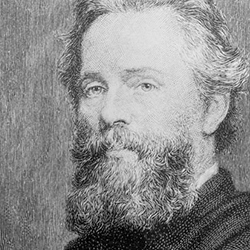
|
International Copyright Woes Helped Sink Herman Melville's Reputation in His Lifetime 10-01-2014October 2014 New York City native Herman Melville (1819-1891) was a rising American literary star until the 1851 publication in London and New York of his magnum opus Moby-Dick sank his reputation. The lack of international copyright cooperation played a large part in this sad outcome, which was not reversed until years after the author's death. |
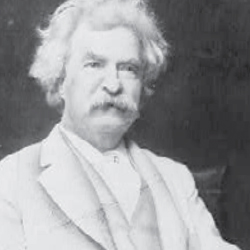
|
Mark Twain Debuted Iconic Style at Copyright Hearing 11-01-2014November 2014 Mark Twain impersonators routinely don a white suit to evoke the persona of the famous author. But Twain himself did not make a habit of wearing white until very late in his life. He unveiled his signature style on December 7, 1906, at age 71, when he testified about a copyright reform bill before the Congressional Joint Committee on Patents. The hearing took place in the Congressional Reading Room of the Library of Congress. |
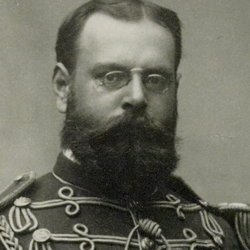
|
The March King and Taylor Swift Share Common Concerns 12-01-2014December 2014 John Philip Sousa (1864-1932), who was called the March King, and Taylor Swift have something in common: the two copyright owners expressed concern about the means of distributing their music. Swift and Sousa would agree that new technology brings new challenges to composers, songwriters, and musicians. |
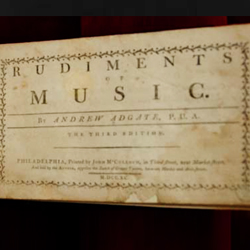
|
Music of New Nation Registered Decades Before Law Protected Music 01-01-2015January 2015 On November 18, 1790, Andrew Adgate paid sixty cents to the clerk of the Philadelphia District Court to register the copyright to the third edition of "Rudiments of Music," published with "Philadelphia Harmony," a collection of "psalm tunes, hymns, and anthems." Only six months earlier, President George Washington had signed the new nation's first federal copyright law, which protected maps, charts, and books—but made no mention of music. U.S. law did not explicitly protect musical compositions until 1831. |
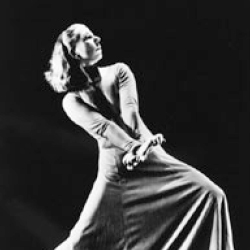
|
Dance Pioneer Hanya Holm Was First to Register Choreography 02-01-2015February 2015 The 1976 Copyright Act was the first U.S. law expressly to make choreography a copyrightable subject matter. However, prior to the Act's effective date—January 1, 1978—choreography made its appearance in the records of the Copyright Office. The first person to register a claim to copyright on a choreographic work was Hanya Holm in 1952. The work—the choreography for the Broadway musical Kiss Me Kate—was registered as a drama. |
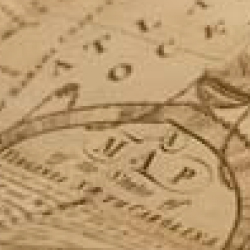
|
The "Father of American Geography" Registers Early Copyright Claim, Sues 03-01-2015March 2015 On May 12, 1789, Jedidiah Morse petitioned Congress for the exclusive right to publish The American Geography, or a View of the Present Situation of the United States of America. He was eager to secure a copyright for his work because his first book, Geography Made Easy, had sold beyond his most sanguine expectations." Congress was then convened in New York City in its very first session following ratification of the U.S. Constitution. Members set aside Morse's petition, along with those of a handful of other authors, choosing instead to pass the nation's first copyright law in its second session. |
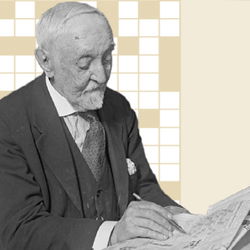
|
Word Cross Puzzle Morphs to Crossword Success 04-01-2015April 2015 Arthur Wynne, creator of the crossword puzzle, was trying to fill a blank space in his newspaper on a cold evening in December 1913. The British-born employee of the New York World created a game for readers after his editor told him to figure out something to fill the page in the Sunday "Fun" section that appeared on December 21, 1913. Copyright in crossword puzzles contributed to the creation of a publishing business, the growth of the American publishing industry, individual careers, and amusement for many people. |
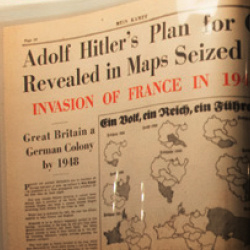
|
Mein Kampf Infringer Aimed to Warn of Hitler Threat 05-01-2015May 2015 The German copyright to Adolf Hitler's Mein Kampf was much in the news recently. Stories and blogs report that the copyright was to expire on December 31, 2015. Unless a German court decided otherwise, anyone could legally publish Hitler's original version after that. Since the end of the war, Germany has relied on copyright to suppress Mein Kampf, deeming it too dangerous for reprinting. The copyright history of the work in the United States is not less complicated. |

|
Deposits Feed Americans' Desire to "Do" Their Genealogy 06-01-2015June 2015 Genealogy has become the second most popular hobby in the United States, behind only gardening, according to ABC News. Washington, DC, is fortunate to be home to three preeminent U.S. Genealogical libraries, which are located at the National Society of the Daughters of the American Revolution headquarters, the National Archives, and the Library of Congress. The Copyright Office plays an important role in establishing the Library as a leading genealogy library. |

|
07-01-2015July/August 2015 For many, summertime means baseball. For more than a century, the origins of America's national pastime have been much debated. But many agree that the American game started in towns and cities of New England, New York, and the Mid-Atlantic, with rules of play varying by region. As the game increasingly captured the American imagination, baseball-inspired visual works—and copyright registrations—proliferated, a trend continued to this day. |
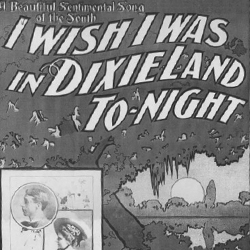
|
Who's on First, That Is, Who IS First? 09-01-2015September 2015 Being the first can be meaningful to some copyright claimants. Sol Bloom wanted and obtained the first copyright registration issued in the twentieth century. |

|
First Foreign Copyright Registered 125 Years Ago 02-01-2016February 2016 On July 3, 1891, English playwright Henry Arthur Jones applied to register his drama Saints and Sinners. Two days earlier, the International Copyright Act of 1891 had taken effect. Often known as the Chace Act, it authorized U.S. protection of works of foreign nationals under certain conditions. Jones was the first foreign author to complete a registration under the act. |

|
Extraterrestrial Copyright: It's Complicated 05-01-2016May/June 2016 When Canadian astronaut Chris Hadfield recorded a remake of David Bowie's "Space Oddity" aboard the International Space Station in 2013 and posted the music video on YouTube, bloggers and journalists raised the seemingly novel question, How does copyright work in space? As it turns out, Hadfield had obtained permission from Bowie to record and distribute the 1969 song, and production and distribution were entirely terrestrial. |

|
07-01-2016July/August 2016 2016 marked the 150th anniversary of the U.S. publication of Alice's Adventures in Wonderland, Lewis Carroll's tale of a little girl who falls through a rabbit hole into a world of strange and fantastic characters. The book's publishing and copyright history is nearly as colorful as the story itself. |

|
04-01-2017April 2017 Early spring weather can be rough on the famed cherry blossoms in Washington, DC. It's disappointing when the trees don't make it to their full bloom, as these iconic blossoms have inspired many creative works. During peak bloom, artists, photographers, writers, and others flock to the Tidal Basin and other blossom-filled points in the area to create their works. |

|
"I Will Survive" Original Work, Derivatives, and Covers 05-01-2017May 2017 Gloria Gaynor's iconic 1978 hit "I Will Survive" is recognized in the Library's National Recording Registry. Today, multiple generations enjoy the song, and Gaynor continues to perform the hit around the world, including at the Library's Bibliodiscotheque. Dino Fekaris and Freddie Perren wrote the words and music to the song as a work made for hire for Perren-Vibes Music Co., who submitted the original copyright application. Since its 1978 release, "I Will Survive" has been recorded and released many times. |
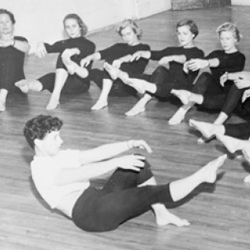
|
Fitness Choreography and Copyright 06-01-2017June 2017 In 1952, Hanya Holm secured the first copyright for choreography when she submitted her choreography for the musical Kiss Me Kate. Prior to then, copyright protection was only granted for choreography if it told a story. Choreography copyright protection was included in the Copyright Act of 1978, and Holm is on record as a contributor to the revised law. While Holm's determination helped lead to copyright protection for choreography, not all choreography qualifies. |
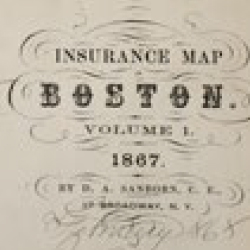
|
Mapping the United States Block by Block 07-01-2017July/August 2017 Located midway between Tucson and Phoenix, Casa Grande, Arizona, has a population of about 50,000, making it fairly small by today's standards for cities. But it's a lot bigger than it used to be. In 1898, only 200 peopled lived along the Southern Pacific railroad tracks there. We know that thanks in part to one of the nearly 25,000 Sanborn fire-insurance maps the Library has digitized and placed on its website. |
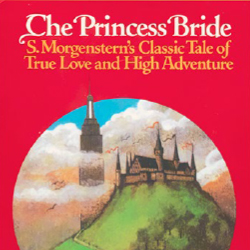
|
As You Wish: A Copyright History of the Princess Bride 09-01-2017September 2017 The Library of Congress added The Princess Bride to the National Film Registry in 2016, and the film kicked off the Library's 2017 summer film festival on Capitol Hill. The 1987 hit film, directed by Rob Reiner, is wildly popular and still widely quoted thirty years later. |
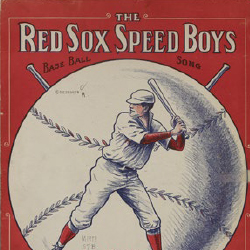
|
10-01-2017October 2017 While baseball has inspired the writing of numerous songs over the years, Major League Baseball teams—especially championship teams—often make songs from the past popular once again. |

|
Tony Bennett: Musician, Artist, and Advocate for Creativity 11-01-2017November 2017 Tony Bennett received the 2017 Library of Congress Gershwin Prize for Popular Song. Librarian of Congress Carla Hayden, in announcing the award, stated that "Tony Bennett is one of the most accomplished and beloved artists of our time. His staying power is a testament to the enduring appeal of the Great American Songbook the Gershwins helped write, and his ability to collaborate with new generations of music icons has been a gift to music lovers of all ages." |

|
Star Wars: Forty Years of Copyright Registrations 12-01-2017December 2017 More than 3,600 copyright registrations and documents have been filed for Star Wars works of creativity. It all started in 1977 with the original Star Wars movie registration, filed just before the records went digital in 1978. At the same time, Twentieth Century-Fox Film Corporation filed registrations for movie artwork and the trailer. |
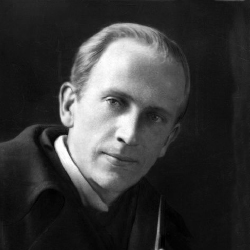
|
A.A. Milne: More than Just Winnie-The-Pooh 01-01-2018January 2018 British author Alan Alexander (A.A.) Milne was born January 18, 1882, and every year on that day, many celebrate the bear he is mostly known for, Winnie-the-Pooh. But Milne also has a history of writing poems, plays, and other articles in various journals. |

|
02-01-2018February 2018 February 2018 was huge for athletics, with the Super Bowl, the NBA all-star game, and of course the Winter Olympics. What can the athletes and the organizations that run these events register with the Copyright Office? |
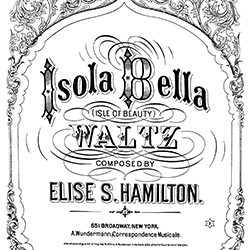
|
Celebrating Women's History Month: Female Songwriters 03-01-2018March 2018 Female songwriters have been registering works for copyright protection for more than 147 years. They appear as far back as book one of the Copyright Record. |

|
04-01-2018April 2018 In January 2018, we celebrated the fortieth anniversary of the current copyright law taking effect. The Copyright Act of 1976 was signed into law on October 19, 1976, and went into effect on January 1, 1978. Register of Copyrights Barbara Ringer spent many years—before and after becoming Register—writing the Act and pushing the legislation through Congress. Here's a look back at some of the first works registered under the new law. |
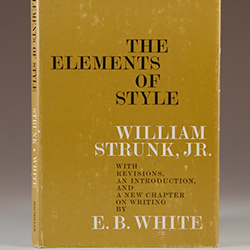
|
The 100th Anniversary of The Elements of Style 05-01-2018May/June 2018 William Strunk Jr. and E.B. White's book The Elements of Style has served as a guide for writers for 100 years. In 2011, Time named the book "one of the 100 best and most influential books written in English since 1923." Strunk wrote the first edition of the text and registered it with the Copyright Office in 1918. His book contained three main concepts: omit needless words, use active voice, and use parallel construction on concepts that are parallel. |
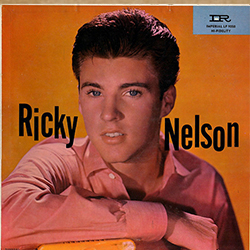
|
07-01-2018July 2018 For many of us, a song can magically transport us back in time. Summer songs seem to be even more powerful. Looking back at sixty years of the Billboard Hot 100 lists, here's a sampling of number-one summer flashback hits. |

|
Smokey Bear and Other Treasures 08-01-2018August/September 2018 Cool and quiet, the copyright archives in the basement of the Madison Building are silent except for the low hum of a computer or the rattling of a cart as books are pulled and returned to the shelves. In this small archive you will not find something as fantastical as George Washington’s personal papers, but what can be uncovered are a number of unique documents preserving the history of America, the Copyright Office, and the Library of Congress. |
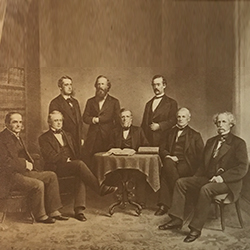
|
Archived Correspondence Surprises Office Staff 10-01-2018October 2018 The Office of Public Information and Education (PIE) recently became aware of a number of boxes of Copyright Office material found mixed in with other collections at the off-site facility in Landover, Maryland. The uncovered collection comprises approximately thirty boxes, and while the material was not what was expected, its contents were a pleasant surprise. |
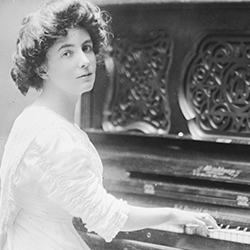
|
Early Female Musical Writers Discovered Through Copyright Records 11-01-2018November 2018 Ben West, director, performer, and musical theater historian, discovered what appears to be the first musical registered with the Copyright Office written solely by a woman. In 1905, Clare Kummer registered her musical Noah’s Ark. |
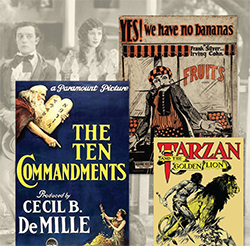
|
Works Enter the Public Domain in the United States for the First Time in Twenty Years 12-01-2018December 2018 On October 27, 1998, President Clinton signed the Sony Bono Copyright Term Extension Act, which extended the term of copyright an additional twenty years, making the term for most works to be the life of the author plus seventy years. It similarly extended terms of anonymous and pseudonymous works, works made for hire, and works in their renewal terms from seventy-five to ninety-five years. Under the Act, works made in 1923 or afterward that were still protected by copyright in 1998 would not enter the public domain until January 1, 2019, or later. |
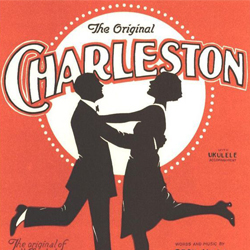
|
The Charleston Enters the Public Domain 01-01-2019January 2019 One famous musical work new to the public domain is “The Charleston.” Published in 1923, it entered the public domain on January 1, 2019. The song, with or without lyrics, has been used many times in many different ways since 1923. |
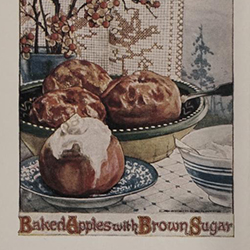
|
Life in 1923 as Told by Books Currently in the Public Domain 02-01-2019February 2019 On January 1, any work from 1923 that had still been protected by copyright entered the public domain. Hundreds of books from the Library’s collection from 1923 are already online, with more being added as they are digitized. These books—free to use and share—offer a glimpse at what life was like in 1923. |
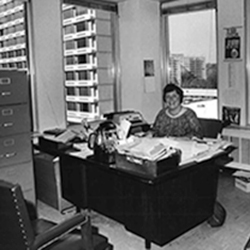
|
Fifty Years Ago: The Copyright Office Moves to Crystal City 03-01-2019March 2019 In March 1969, the Copyright Office moved from the Annex Building (now the Adams Building) of the Library of Congress to a temporary space in Crystal City in Arlington, Virginia. The Office stayed there until September 1980, when it moved into the newly built Madison Building. Along with relocating their offices, staff members had to coordinate moving the copyright records, including 14,000 volumes of record books. |

|
She’s So Unusual Created Many Copyright Moments 04-01-2019April 2019 Librarian of Congress Carla Hayden named Cyndi Lauper’s album She’s So Unusual as one of the twenty-five entries to the 2018 National Recording Registry. Recordings are named to the Registry because of their cultural, historic, and aesthetic importance to the nation’s recorded sound heritage. This sound recording reminds us of all the copyright moments one album can create. |
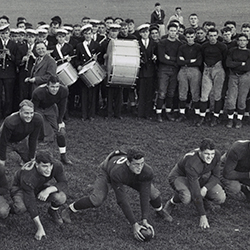
|
Is Your Favorite Fight Song Under Copyright Protection? 05-01-2019May 2019 Just about every sports team has its own fight song. Some teams wrote fight songs or had them commissioned specifically for the team. Others adopted previously written songs as their own. Some have been around since the 1800s, and some are relatively new. Are they free for anyone to play? Find out which of these ten popular fight songs are in the public domain. |
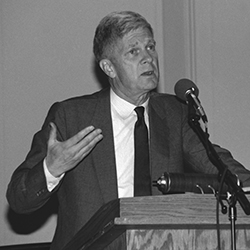
|
James H. Billington’s Contributions to the Copyright Office 06-01-2019June 2019 Service units throughout the Library of Congress honored James H. Billington, the thirteenth Librarian of Congress, as part of “Scholarship and Service: The Legacy of James H. Billington” on May 8, 2019. The Copyright Office contributed photos from hearings, celebrations, meetings, and day-to-day Office activities. This Copyright Lore highlights just a few of the times Dr. Billington collaborated with the Copyright Office. |

|
07-01-2019July/August 2019 While copyright might not be the first thing that comes to mind when you think about taking a travel adventure, copyright and adventure do go hand in hand. Many songwriters write about the incredible places they’ve been or want to visit. One song, “I’ve Been Everywhere,” mentions more places than any other—nearly 100. The original song has led to many additional creative works. |
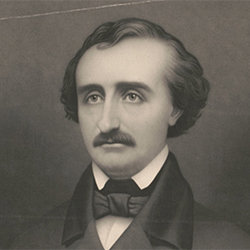
|
Quaint and Curious Forgotten (Copyright) Lore 09-01-2019September 2019 As we approach October, thoughts often turn to colorful foliage, cozy hoodies, and pumpkin spice everything. Some thoughts also drift toward the spooky season, bringing to mind scary stories and maybe even “many a quaint and curious volume of forgotten lore.” Nothing in literature is as spooky or as culturally relevant as the afore-quoted Edgar Allan Poe. |